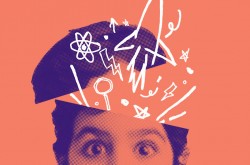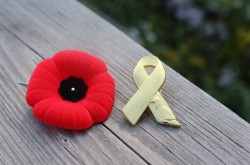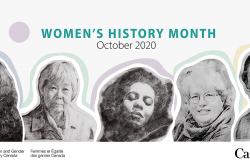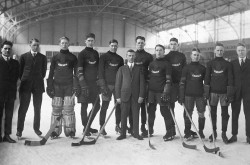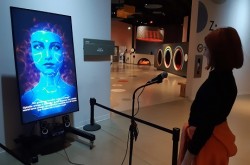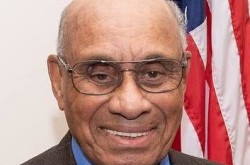Leonardo da Vinci: An expert shares his insights on a life of genius

As an inventor, artist, scientist, anatomist, engineer, architect, sculptor, and philosopher, there are few figures in human history who fascinate and inspire us as much as Leonardo da Vinci.
For Dr. Andrea Bernardoni, Senior Researcher at the Galileo Museum in Florence, Italy, Leonardo’s work has been a key focus of study. Looking through the lens of the History of Technology, Bernardoni has curated several sections of exhibitions dedicated to Leonardo, which were showcased at venues in Italy, Tokyo, and the U.S. An accomplished author and an award-winning filmmaker, Bernardoni is among the world’s top experts on the life and work of Leonardo.
As the world prepares to commemorate Leonardo’s death five centuries ago, Bernardoni is busier than ever — sharing his expertise through presentations around the world. The Ingenium Channel caught up with Bernardoni to find out what we can find in Leonardo’s codices — or handwritten books — and what we can all learn by looking at Leonardo’s engineering, science, and machines.

Dr. Andrea Bernardoni, Senior Researcher at the Galileo Museum in Florence, Italy.
Who is Leonardo to you?
From the point of view of the history of technology, Leonardo is the key witness of an entire era. In fact, its codices constitute by far the largest source of information available. And here we find both very clear traces of the tradition of medieval origin, and visions of what would be the future, near and far. All this mediated by the extraordinary ability to read the world and nature and its uncontrollable curiosity.
What lead you to spend so much of your career on his work?
The reason is essentially the one explained above: by studying Leonardo you have access to an entire era. This does not mean neglecting the other authors of the time. Indeed, it would be a serious mistake to focus only on Leonardo. Its codices, in fact, if extrapolated from the historical context, can be completely misleading.
What would you like to achieve through your work?
My main interest is to reconstruct the technological context of the past, mainly that of the Renaissance. My constant attention is to maintain a rigorous coherence with the sources, even at the cost of leaving some problems unsolved or showing the inconsistencies that are often found in these codices. On the contrary, it is surprising as often from those that seem to be insurmountable problems, with a more open approach we can obtain precious information.
What is "mechanical philology" and how have you incorporated it into your work?
The term “mechanical philology” has, for the past few decades, been used to refer to that field of research within the history of technology which deals with the study and reconstruction of real and virtual models of machines and technologies described in past documents or archaeological finds. Mechanical philology was born as a multidisciplinary research field, which unites the traditional competences of historians with the avant-garde competences of technicians. Together these figures consult and interpret the sources of the history of technology, with the aim of understanding and explaining the machines and the technical processes of the past. To me, mechanical philology is the only possible approach to the history of technology.
What can we learn from looking at Leonardo's engineering, science, and machines?
We can learn a lot about Leonardo's time. The amount of information contained in his codices is astonishing, in every field of knowledge of the time. We can also learn a lot about Leonardo himself: everything that we read and interpret is mediated by his look, his interests, his experience, and his thoughts. Among these it is extremely relevant, even today, a model of approach to the resolution of problems that for its ability to apply typical solutions of a field to other fields very far, is absolutely extraordinary.
~ Dr. Andrea Bernardoni
Do you find any links to the work of art historians who look at Leonardo?
Mechanical philology, as a multidisciplinary research field, draws many and precious information from the work of art historians. Artworks are the main sources of visual information of the past, and as such they contain information that, if correctly read, reveal a lot about the time in which they were crafted. For example, in our work on the history of lifting machines — Tirari e Alzari — the information given to us by paintings and sculptures have been as important as those contained in the codices of engineers of the past.
What are some of the myths you encounter working on Leonardo?
The figure of Leonardo has been strongly mythologized. To the point that often anything related to Leonardo, however incredible, can be considered true. An example is the famous flight from Monte Ceceri, near Florence. It is an invention of the Russian novelist Merezkovskij who took on such a real dimension that it earned commemorative plaques as if it had actually happened.
From a strictly technical point of view, Leonardo's ability to draw leads us to think that almost every machine contained in his codes have actually been realized. But the amount of inaccuracies, and often gross errors, that characterize these drawings tell a completely different story.
Among Leonardo’s many ideas and creations, which is your personal favourite? Why?
Leonardo's studies for the construction of the equestrian monument to Francesco Sforza represent for me an extraordinary chapter of Leonardo's work. I have dedicated many years of study to this project, one of the few of which we can certify a state of very advanced realization, even if never accomplished. In fact the drawings are very detailed, extremely coherent with each other, and tell of a very refined and concrete evolution of his studies.
But what is perhaps the most fascinating theme of Leonardo's studies is that of flight. It is not so much for the unquestionable beauty of some very famous designs of flying machines, but rather the possibility to follow the extraordinary evolution of Leonardo's thought on this topic during the course of his entire life. Furthermore, the reach of Leonardo's insights on the subject of flight, and more generally of fluid dynamics, are probably unique in the history of humanity.
Interested in learning more about Leonardo da Vinci? Join Dr. Andrea Bernardoni at the Canada Science and Technology Museum for an evening of discussion and discovery at Curiosity on Stage leading up to Leonardo da Vinci – 500 Years of Genius.
















